How to Remove Static From Latex Balloons?
Do your latex balloons keep sticking together or attracting every speck of dust? This common issue can ruin your decorations and your fun.
To remove static from latex balloons, you need to neutralize the electrical charge. This can be done by increasing humidity1, using anti-static products2, or applying simple household remedies3. These methods help dissipate the static buildup, making your balloons behave.
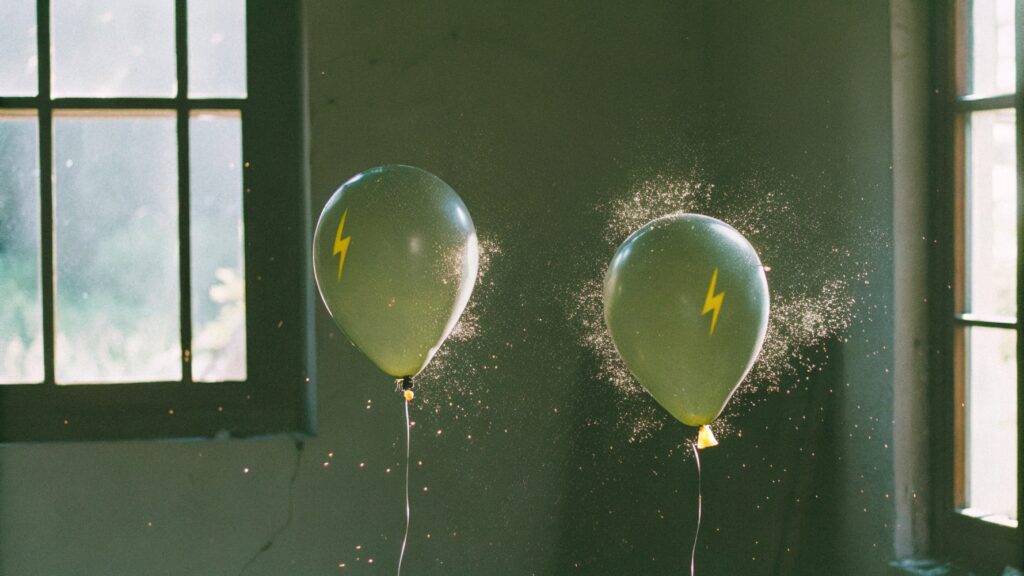
Dealing with static cling4 on balloons can be frustrating when you are setting up for an event or just trying to enjoy them. I understand this problem well because I have seen it in our factories and with many customers. Let me walk you through how to tackle this issue.
Why Do My Latex Balloons Have Static?
Are you wondering why your balloons behave like magnets? It is because of static electricity5.
Static electricity builds up when two surfaces rub together, transferring electrons. For balloons, this usually happens when they rub against each other, against carpets, or even against your clothes. This transfer creates an imbalance of electric charges, causing the balloon to become charged. Dry air makes this problem worse because humidity helps dissipate these charges. That is why static is more common in winter or in dry climates.
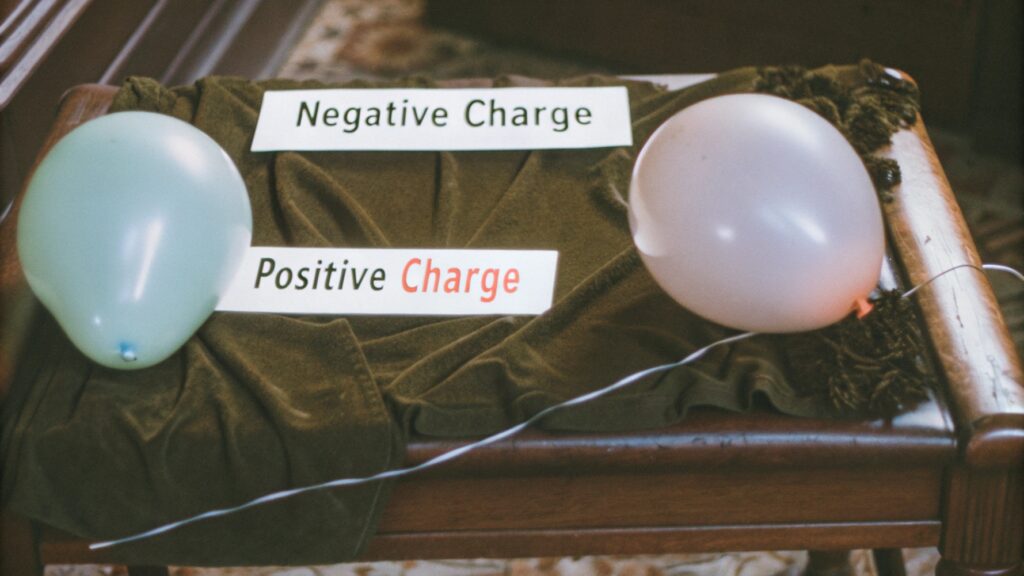
Let us dive deeper into the science behind static on latex balloons. Understanding this can help you better prevent it.
Static electricity is an imbalance of electric charges within or on the surface of a material. This imbalance stays until it can move away, for example, through an electric current or discharge. In balloons, this is known as triboelectric charging6. This happens when different materials come into contact and then separate.
Triboelectric Effect and Balloons
The triboelectric effect is the reason your balloons get static. When you rub a balloon, electrons move from one surface to another.
| Material | Electron Affinity | Charge Acquired When Rubbed |
|---|---|---|
| Human Skin | Low | Positive (+) |
| Dry Human Hair | Low | Positive (+) |
| Wool | Low | Positive (+) |
| Latex (Balloons) | High | Negative (-) |
| PVC (Pipes) | Higher | Negative (-) |
| Teflon (Coatings) | Highest | Negative (-) |
As you can see, latex has a high electron affinity. This means it tends to gain electrons. When a latex balloon rubs against something like human hair, wool, or a carpet, it picks up electrons from that material. The balloon then becomes negatively charged. The material it rubbed against becomes positively charged. These opposite charges attract, which is why your balloon sticks to walls or attracts dust. This is also why balloons stick to each other.
The Role of Humidity
Humidity plays a big role in static. Do you know why? It is because water helps to conduct away the static charge.
Water molecules in the air are polar. This means they have a slight positive end and a slight negative end. These water molecules can gather on the surface of charged objects. They form a thin, conductive layer7. This layer helps to carry away the excess electrons, or static charge, from the balloon's surface. In dry environments, there are fewer water molecules to do this. The static charge stays on the balloon, making the static problem worse. This is why you will notice more static in dry climates or during winter months when indoor air is drier due to heating. By raising the humidity, you give the static a path to dissipate.
What is the Best Anti-Static Spray for Balloons?
Are you looking for a quick fix to remove static from your balloons? An anti-static spray might be your best bet.
The best anti-static sprays for balloons are those specifically designed for fabrics or electronics. These sprays contain chemicals that help conduct electricity or neutralize static charges. Many people find success with sprays intended for laundry or sensitive electronic equipment. When using any spray, it is important to apply a very light, even mist to avoid making the balloons damp or sticky.
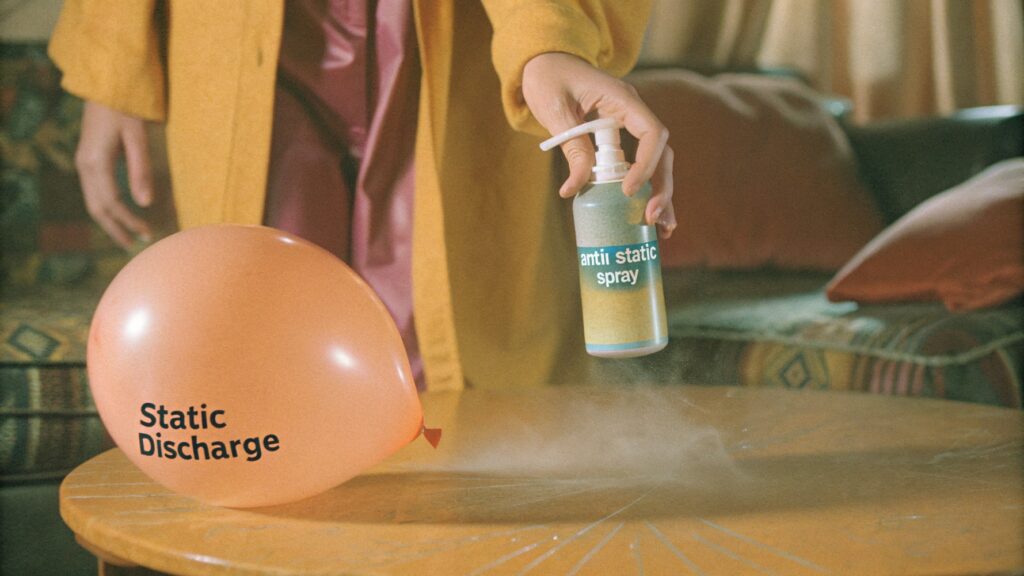
Choosing the right anti-static spray can make a big difference. Let me share some insights from what I have learned over the years.
Not all anti-static sprays are created equal, and some might even harm your balloons. You want to pick one that is safe for latex and does not leave a residue.
Types of Anti-Static Sprays and Their Ingredients
Anti-static sprays work by creating a conductive layer7 or by neutralizing charges. Do you know what makes them work? It is usually a mix of chemicals.
Most anti-static sprays achieve their effect through one of two main mechanisms: humectants or ionic compounds8. Humectants are substances that attract and retain moisture from the air. This increases the surface conductivity of the material. A common humectant used is glycerin9. Ionic compounds work by adding ions to the surface. These ions help to neutralize existing static charges. Quaternary ammonium compounds (often called "quats") are common ionic ingredients. Other sprays may use a combination of these elements. Some household alternatives like diluted fabric softener10 work on similar principles, using ingredients that reduce friction11 and conduct minor charges.
| Ingredient Type | How it Works | Common Examples | Notes |
|---|---|---|---|
| Humectants | Attracts moisture from the air, increasing surface conductivity | Glycerin, Sorbitol | Can feel slightly damp if over-applied |
| Ionic Compounds | Provides ions to neutralize existing charges | Quaternary Ammonium Compounds | Leaves a thin, invisible conductive layer7 |
| Lubricants/Softeners | Reduces friction, preventing charge build-up | Fatty alcohols | Often found in fabric softener10s |
When selecting a commercial anti-static spray for balloons, look for products that clearly state they are safe for plastics, fabrics, or delicate surfaces. Avoid sprays containing harsh solvents or oils that could degrade the latex. Always test a small, inconspicuous area first. This makes sure there is no discoloration or damage to the balloon material. A light mist is usually all you need. Heavy application can make the balloons damp, sticky, or attract more dust.
How Can I Prevent Static on Balloons Naturally?
Are you looking for ways to stop static on balloons without using chemicals? There are many natural methods you can try.
To prevent static on balloons naturally, focus on increasing humidity and using simple physical barriers or mild lubricants. Running a humidifier in the room where you are inflating balloons can significantly reduce static. Gently wiping balloons with a dryer sheet, a damp cloth, or even lightly misting them with water can also help dissipate existing charges and prevent new ones from forming.
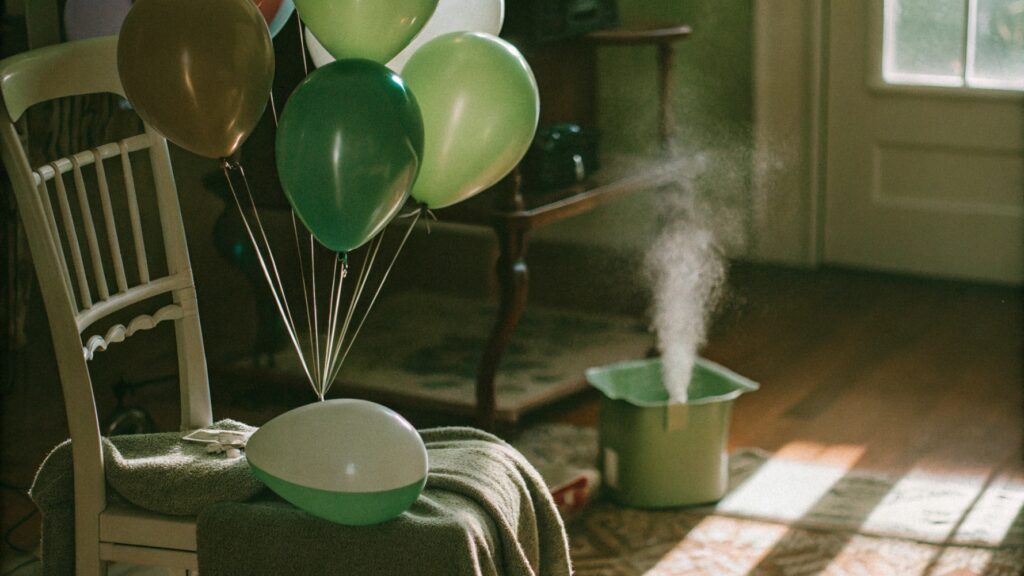
Preventing static naturally is often the best approach, especially if you are concerned about chemicals. Let me share some common and effective natural ways I have seen used.
Many of these methods target the air around the balloons or the surface of the balloons themselves. They work by either making the air more conductive or by grounding12 the static charge.
Increasing Room Humidity
Increasing the humidity in the room is one of the most effective natural ways to combat static. Do you know why? It is because water vapor helps to conduct away charges.
You can do this by using a humidifier. Just turn it on in the room where you are preparing your balloons. If you do not have a humidifier, you can place bowls of water around the room. You can also hang wet towels. Even taking a hot shower nearby can temporarily increase the humidity. The goal is to raise the moisture content in the air. This provides a path for the static charges to escape from the balloon. This method is especially helpful in dry indoor environments where heating or air conditioning can strip moisture from the air. Higher humidity levels make it much harder for static charges to build up in the first place, promoting an overall static-free environment for your balloon decorations.
Using Natural Lubricants or Conductors
Some natural substances can help reduce static by providing a very thin, slightly conductive or lubricating layer on the balloon's surface. Have you thought about using everyday items?
A small amount of baby oil applied to a soft cloth and then gently rubbed over the balloon can help. The oil creates a subtle barrier that reduces friction11. This also provides a conductive path for static to dissipate. Be careful not to use too much oil, as it can make the balloons greasy or degrade the latex over time. Another option is to gently wipe the balloon with a dryer sheet. Dryer sheets contain anti-static agents that transfer to the balloon. You can also lightly mist the balloons with water from a spray bottle. A fine mist is best to avoid fully wetting the balloons. The water acts as a conductor, letting the static discharge. For me, a slightly damp cloth has always worked wonders for a quick fix.
Are There Household Items to Get Rid of Balloon Static?
Do you have staticy balloons and no special spray on hand? Do not worry, many common household items can help.
Yes, there are several everyday household items you can use to get rid of balloon static. Dryer sheets are very effective due to their anti-static properties. You can also use a small amount of liquid fabric softener10 diluted in water to wipe down balloons. For a quick fix, gently rub balloons with pure petroleum jelly (like Vaseline) or a very light coating of baby oil13 on a soft cloth. Increasing room humidity with towels or a spray bottle also works.
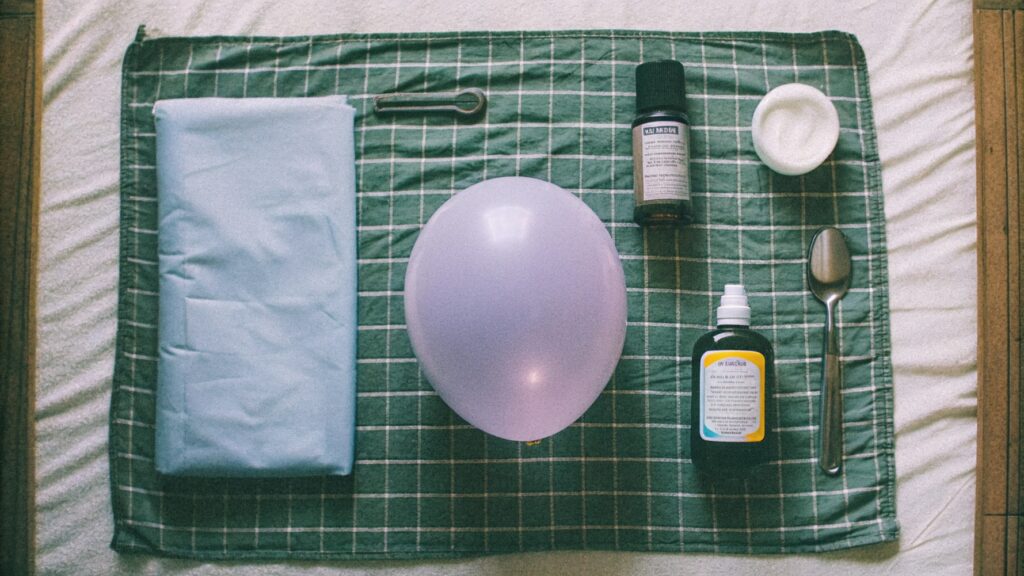
It is amazing what you can find around the house to solve common problems. For balloon static, you likely have what you need already.
These solutions are practical, easy to find, and generally safe for latex balloons14 when used correctly. The key is applying them sparingly.
Natural Lubricants and Anti-Static Agents
Many household items contain agents that can reduce friction11 or conduct away static. Have you got any of these at home?
Petroleum jelly (Vaseline) or baby oil can be used by applying a tiny amount to a soft cloth and gently wiping the balloon. This creates a thin, invisible layer that reduces friction and helps dissipate the charge. The anti-static properties in dryer sheets15 come from ingredients that help neutralize static cling on fabrics. When you rub a dryer sheet on a balloon, some of these materials transfer to the balloon's surface, helping to discharge static. Another method is to dilute a small amount of liquid fabric softener10 in water (about 1 part softener to 10 parts water). You can then lightly mist this solution onto the balloons or wipe them with a cloth dipped in the solution. Fabric softener contains cationic surfactants that act as anti-static agents.
Mechanical Methods
Sometimes, a physical approach can solve the static problem directly by grounding12 the charge. Have you considered simply touching the balloon?
One simple way to remove static is to literally "ground" the balloon. You can gently rub the balloon against a metal object16, like a metal table leg or a grounded pipe. The metal acts as a conductor, allowing the static charge to flow away from the balloon and into the ground. Be careful not to puncture the balloon. Another method is to simply rub the balloon with your bare hands. Your body can act as a conductor, transferring the static charge from the balloon to you and then to the ground. This works because the human body is conductive and connected to the Earth's electrical potential. If the static is really bad, you can also try running the balloon under a very light, fine mist of water, or even just wiping it with a damp cloth. The water helps to dissipate the charge.
Conclusion
Getting rid of static on latex balloons is all about neutralizing the charge. Increase humidity in the air, use anti-static sprays, or try household items like dryer sheets15 or a damp cloth. These simple steps will help your balloons stay put and look great.
-
Learn how humidity plays a crucial role in reducing static electricity in balloons. ↩
-
Discover the most effective anti-static products specifically designed for balloons. ↩
-
Find out how common household items can effectively eliminate static from your balloons. ↩
-
Understand the causes of static cling in latex balloons and how to prevent it. ↩
-
Understanding static electricity can help you manage and prevent issues with your latex balloons. ↩
-
Gain insights into triboelectric charging and its impact on your balloon decorations. ↩
-
Learn about conductive layers and how they can help reduce static on your balloons. ↩ ↩ ↩
-
Understand how ionic compounds work to neutralize static charges on balloons. ↩
-
Explore the properties of glycerin and its effectiveness in combating static cling. ↩
-
Find out how fabric softener can be a simple solution for balloon static. ↩ ↩ ↩ ↩
-
Learn about the relationship between friction and static electricity in balloons. ↩ ↩ ↩
-
Explore the concept of grounding and its effectiveness in reducing balloon static. ↩ ↩
-
Learn how baby oil can create a barrier to reduce static cling on your balloons. ↩
-
Explore effective tips to keep your latex balloons static-free and enhance your decoration experience. ↩
-
Learn how dryer sheets can effectively reduce static cling on your balloons. ↩ ↩
-
Explore the grounding effect of metal objects in reducing static on balloons. ↩
